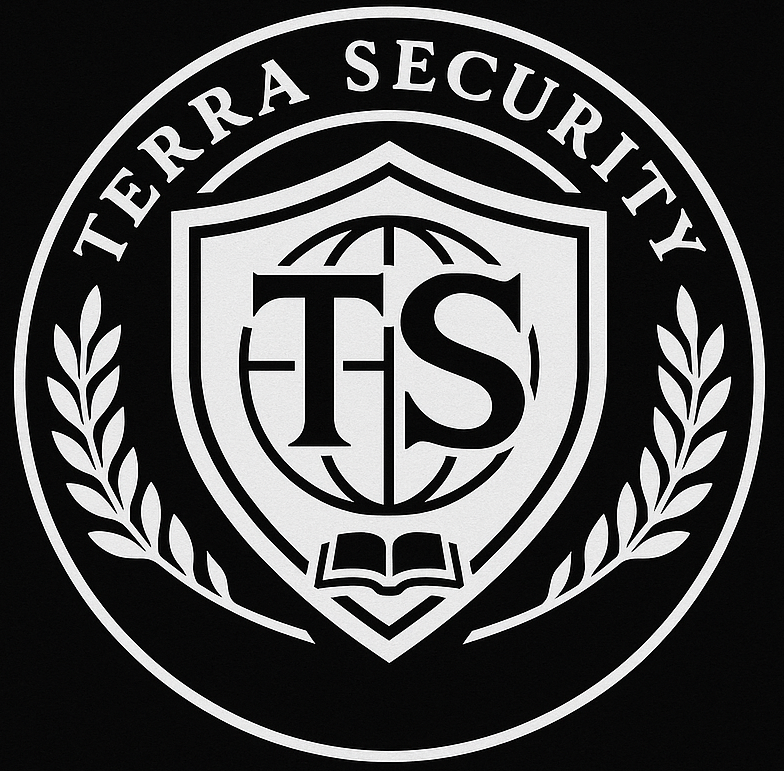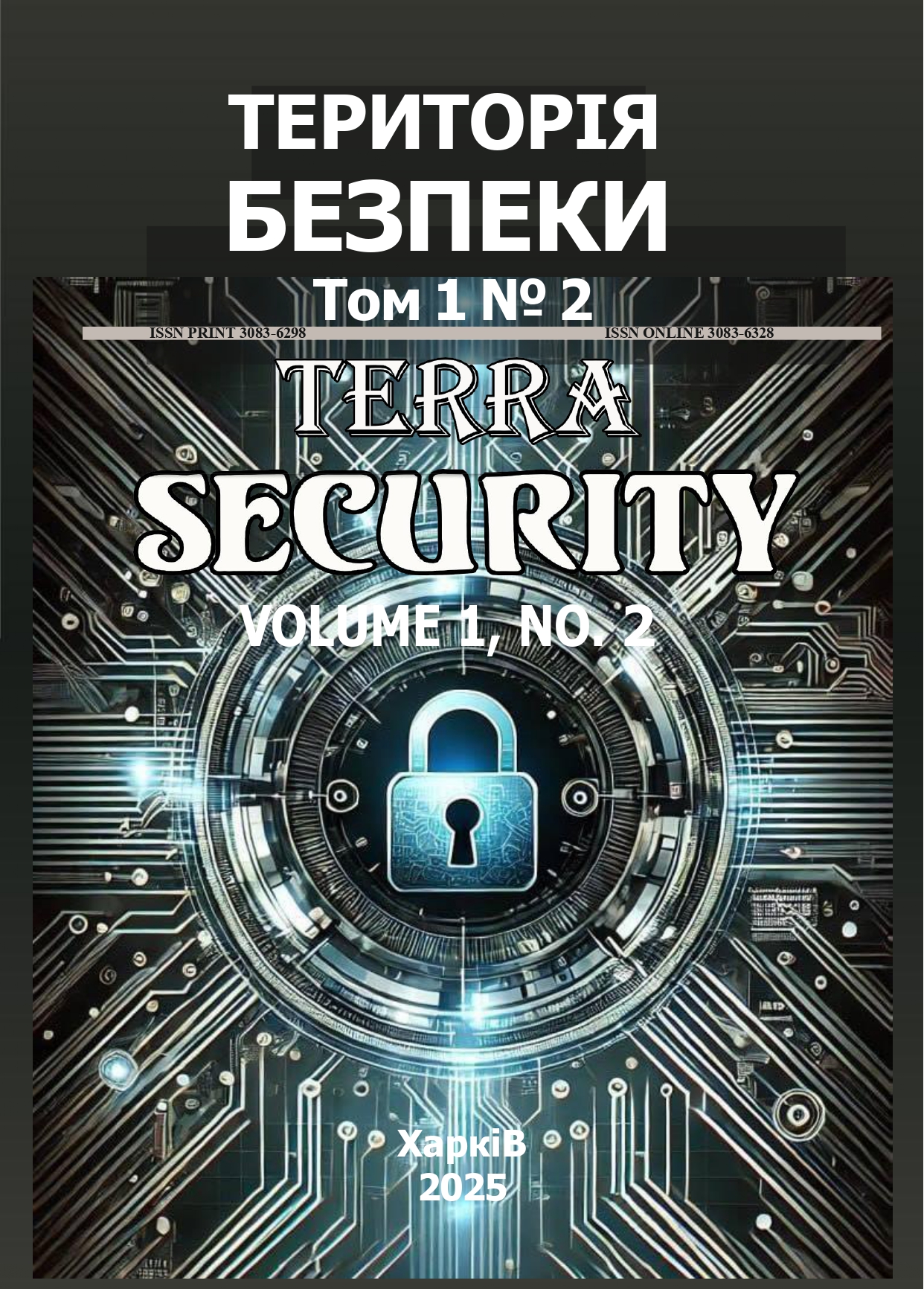МОДЕЛІ КРИПТО-КОДОВИХ КОНСТРУКЦІЙ МАК-ЕЛІСА Й НІДЕРРАЙТЕРА
DOI:
https://doi.org/10.20998/3083-6298.2025.02.10Ключові слова:
крипто-кодова конструкція, кібербезпека, криптосистема, алгоритмічну складність, модель, конфіденційність, цілісністьАнотація
Актуальність дослідження полягає в забезпеченні інформаційної безпеки шляхом створення криптографічних рішень, що поєднують високу продуктивність, стійкість до квантових атак та можливість ефективної реалізації в пристроях з обмеженими ресурсами. Предметом дослідження є підходи та стратегії використання кодових криптосистем, зокрема криптокодових конструкцій Мак-Еліса та Нідеррайтера, як базових механізмів побудови криптографічних систем, стійких до атак. Метою статті є обґрунтування перспектив використання кодових криптосистем як базових механізмів побудови криптографічних систем, стійких до атак на квантові комп'ютери. Розробити алгоритми генерації та декодування криптограм, проаналізувати їх алгоритмічну складність. Результати дослідження. Обґрунтовано перспективи використання кодових криптосистем як базових механізмів побудови криптографічних систем. Розроблено алгоритми генерації та декодування криптограм, проаналізовано їх алгоритмічну складність та оцінено потенціал інтеграції таких структур у реальні системи. Висновки. Дослідження дозволяє виявити переваги системного підходу в плануванні швидкості дій завдяки попереднім синдромам обчислень. Рішення алгоритмічних труднощів свідчать про високу ефективність криптозахисту, що робить їх придатними для використання в сучасних інформаційних системах.
Посилання
- Alsadie, D., Baldi, M., Chiaraluce, F. and Santini, P. (2021), “Enhancing the McEliece Cryptosystem Based on Polar Codes and Its Application to IoT”, IEEE Access, 9, pp. 145678–145692, https://doi.org/10.1109/ACCESS.2021.3123456
- Gaborit, P., Hauteville, A. and Tillich, J.-P. (2022), “Quantum Security Analysis of the Niederreiter Cryptosystem”, Designs , Codes and Cryptography, 90(3), pp. 557–581, https://doi.org/ 10.1007/s10623-022-01002-4
- Couvreur, A. and Lequesne, M. (2023), “On the Security of Algebraic Geometry Codes Against Sidorenko Attacks”, IEEE Transactions on Information Theory, 69(5), pp. 2890–2905, https://doi.org/10.1109/TIT.2023.3234567
- Banegas, G. and Urbanowicz, J. (2024), “Code-Based Cryptography for Post-Quantum Blockchain Applications”, Cryptography, 8(1), 12, https://doi.org / 10.3390/cryptography8010012
- Kuchuk, H., Mozhaiev , O., Kuchuk, N., Tiulieniev, S., Mozhaiev, M., Gnusov, Y., Tsuranov, M., Bykova, T., Klivets , S. and Kuleshov, A. (2024), “Devising a method for the virtual clustering of the Internet of Things edge environment”, Eastern-European Journal of Enterprise Technologies , vol. 1(9(127), pp. 60–71, doi: https://doi.org/10.15587/1729-4061.2024.298431
- Hu, N. (2024), “Internet of things edge data mining technology based on cloud computing model”, International Journal of Innovative Computing, Information and Control , vol. 20(6), pp. 1749–1763, doi : http://dx.doi.org/10.24507/ijicic.20.06.1749
- Hunko, M., Tkachov, V., Kovalenko, A. and Kuchuk, H. (2023), “Advantages of Fog Computing: A Comparative Analysis with Cloud Computing for Enhanced Edge Computing Capabilities”, KhPI Week 2023 - Conference Proceedings , pp. 1–5, doi: https://doi.org/10.1109/KhPIWeek61412.2023.10312948
- Ding, H., Ding, X., Xia, F. and Zhou, F. (2023), “An Efficient Method for Implementing Applications of Smart Devices Based on Mobile Fog Processing in a Secure Environment”, International Journal of Advanced Computer Science and Applications , vol.14(10), pp. 93–105, doi: https://doi.org/10.14569/IJACSA.2023.0141011
- Kuchuk, H. and Malokhvii, E. (2024), “Integration of iot with Cloud, Fog and Edge computing: a review”, Advanced Information Systems , vol. 8, no. 2, pp. 65–78, doi : https://doi.org/10.20998/2522-9052.2024.2.08
- Routray, K. and Bera, P. (2024), “Fog-Assisted Dynamic IoT Device Access Management Using Attribute-Based Encryption”, ACM International Conference Proceeding Series, pp. 346–352, doi: https://doi.org/10.1145/3631461.3631466
- Mani Kiran, Ch.V.N.S., Jagadeesh Babu, B. and Singh, M.K. (2023), “Study of Different Types of Smart Sensors for IoT Application Sensors”, Smart Innovation, Systems and Technologies , vol. 290, pp. 101–107, doi: https://doi.org/10.1007/978-981-19-0108-9_11
- Kuchuk, N., Kashkevich, S., Radchenko, V., Andrusenko, Y. and Kuchuk, H. (2024), “Applying edge computing in the execution of IoT operative transactions”, Advanced Information Systems, vol. 8, no. 4, pp. 49–59, doi: https://doi.org/10.20998/2522-9052.2024.4.07
- Petrovska I., Kuchuk, H. and Mozhaiev M. (2022), “Features of the distribution of computing resources in cloud systems”, 2022 IEEE 3rd KhPI Week on Advanced Technology , doi: https://doi.org/10.1109/KhPIWeek57572.2022.9916459
- Li, G., Liu, Y., Wu, J., Lin, D. and Zhao, Sh. (2019), “Methods of Resource Scheduling Based on Optimized Fuzzy Clustering in Fog Computing”, Sensors , vol. 19(9), doi: https://doi.org/10.3390/s19092122
- Deng, R., Lu, R., Lai, C., Luan, T.H. and Liang, H. (2016), “ Optimal workload allocation in fog-cloud computing toward balanced delay and power consumption”, IEEE Internet Thing , Vol. 3, no. 6, pp. 1171–1181, doi: https://doi.org/10.1109/JIOT.2016.2565516
- Kuchuk, N. , Kovalenko, A. , Ruban, I. , Shyshatskyi , A., Zakovorotnyi, O. and Sheviakov, I. (2023), “ Traffic Modeling for the Industrial Internet of NanoThings ”, 2023 IEEE 4th KhPI Week on Advanced Technology , doi: http://dx.doi.org/10.1109/KhPIWeek61412.2023.10312856
- Saurabh and Dhanaraj, R.K. (2024), “Enhance QoS with fog computing based on sigmoid NN clustering and entropy-based scheduling”, Multimed Tools Appl, vol. 83, pp. 305–326, doi: https://doi.org/10.1007/s11042-023-15685-3
- Petrovska, I., Kuchuk, N., Pochebut, M., Kuchuk, H., Mozhaiev, O. and Onishchenko, Y. (2023), “Sequential Series-Based Prediction Model in Adaptive Cloud Resource Allocation for Data Processing and Security”, The 13th IEEE Int. Conf. on Dependable Systems, Services and Technologies, DESSERT'2023, Athens, Greece, pp. 1–6, doi: https://doi.org/10.1109/DESSERT61349.2023.10416496
- Kaur, M., Sandhu, R. and Mohana, R. (2023), “A Framework for QoS Parameters-Based Scheduling for IoT Applications on Fog Environments”, Wireless Personal Communications, vol. 132(4), pp. 2709–2736, doi: https://doi.org/10.1007/s11277-023-10740-6
- Thomas, P. and Jose, D.V. (2023), “Towards Computation Offloading Approaches in IoT-Fog-Cloud Environment: Survey on Concepts, Architectures, Tools and Methodologies”, Lecture Notes in Networks and Systems , 613 LNNS, pp. 37–52, doi: https://doi.org/10.1007/978-981-19-9379-4_4
- Taneja, M. and Davy, A. (2017), “Resource aware placement of IoT application modules in fog-cloud computing paradigm”, Proc. 2017 IFIP/IEEE Symposium on Integrated Network and Service Management (IM), pp. 1222–1228, doi: https://doi.org/10.23919/INM.2017.7987464
- Yin, B., Shen, W., Cheng, Y., Cai, L.X. and Li, Q. (2017), “Distributed resource sharing in fog-assisted big data streaming”, Proc. IEEE Int. Conf. Commun., pp. 1–6, doi: https://doi.org/10.1109/ICC.2017.7996724
- Aazam, M., St-Hilaire, M., Lung, C.-H., Lambadaris, I. and Huh, E.-N. (2018), “IoT resource estimation challenges and modeling in fog”, Fog Computing in the IoT , Springer, pp. 17–31, doi https://doi.org/10.1007/978-3-319-57639-8_2
- Kuchuk, H., Kalinin, Y., Dotsenko, N., Chumachenko, I. and Pakhomov, Y. (2024), “Decomposition of integrated high-density IoT data flow”, Advanced Information Systems , vol. 8, no. 3, pp. 77–84, doi: https://doi.org/10.20998/2522-9052.2024.3.09
- Truong, N.B., Lee, G.M. and Ghamri-Doudane, Y. (2015), “Software defined networking based vehicular adhoc network with fog computing”, 2015 IFIP/IEEE International Symposium on Integrated Network Management, pp. 1202–1207, doi: https://doi.org/10.1109/INM.2015.7140467


